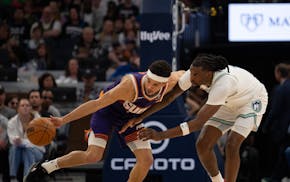For every creature seen or heard, at least a hundred pass by unobserved. Only when we see tracks in the snow do we begin to realize all of the activity going on around us.
For more than 25 winters, starting in 1970, it was my privilege to be the Hopkins School District naturalist and have the opportunity to take hundreds of classroom groups animal tracking each winter. Mostly we hiked the trails at Lowry Nature Center, located in Carver Park near Victoria. On these excursions looking for signs of deer was always a favorite, and we would often find deer tracks and beds in the snow. Fox tracks also created much excitement among the students, as did raccoon tracks that we could count on seeing during warm winter spells. Tracks for both red and gray squirrels often led to and from the bases of trees, and eastern cottonwood rabbit tracks were almost always quite numerous. Mouse and shrew tunnels and tracks, and the footprints of ring-necked pheasants and small birds, were also eagerly recorded by the students on their data sheets.
If you would like to experience the sense of discovery, the day after a light dusting of snow is a good time to track wildlife. Wet snow best preserves details of tracks. Look on sidewalks and driveways, paths in parks, or beneath bird feeders for prints of squirrels, mice and deer.
JIM GILBERT
